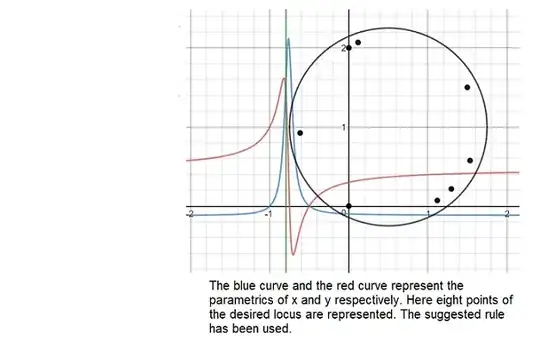HINT.-Put $A=\dfrac{4a+3}{a+1}$ and $B=\dfrac{2a+1}{a+1}$ so you have to solve the system
$$\begin{cases}y=Ax-B\\y=\dfrac{-x}{A}\end{cases}$$ so
$$x =f(a)= {8a^2+10a+3 \over 17a^2+26a+10} \\ y =g(a)= -{2a^2+3a+1 \over 17a^2+26a+10}$$
This is a problem of difficult elimination (of the parameter $a$) that can be solved, as far as I know, only by the old Sylvester method as @amd has done. It is what I did to solve a problem once see at.
However, another way, patient but not intricate as in Silvester (in which it would be easy to make mistakes without using computers), could be as follows:
1) Calculate several points $(x, y)$ giving values to the parameter $a$.
2) With luck, the points obtained could configure the required curve.
3) In this case, the points obtained suggest a circumference.
4) Solve a system of three unknowns $h, k, r$ from $(x-h)^2+(y-k)^2=r^2$
We calculate eight points.
$$\begin{array}{|c|c|}\hline a&-0.95&-0.9&-0.85&-0.8&-0.755&-0.75&-0.7&-0.5\\\hline f(a)&1.120622&1.297297&1.534246&1.5&0.168804&0&-0.615384&0\\\hline g(a)&0.070038&0.216216&0.575342&1.5&2.067852&2&0.923076&0\\\hline\end{array}$$
We have the following figure:

Important note here.- The black circle in the figure is the solution given by @amd and the non-drawn circle to which the points found belong are different, then one of the two answers is wrong. Probably mine although, even with a computer, one can make mistakes in the use of the Silvester method ....
